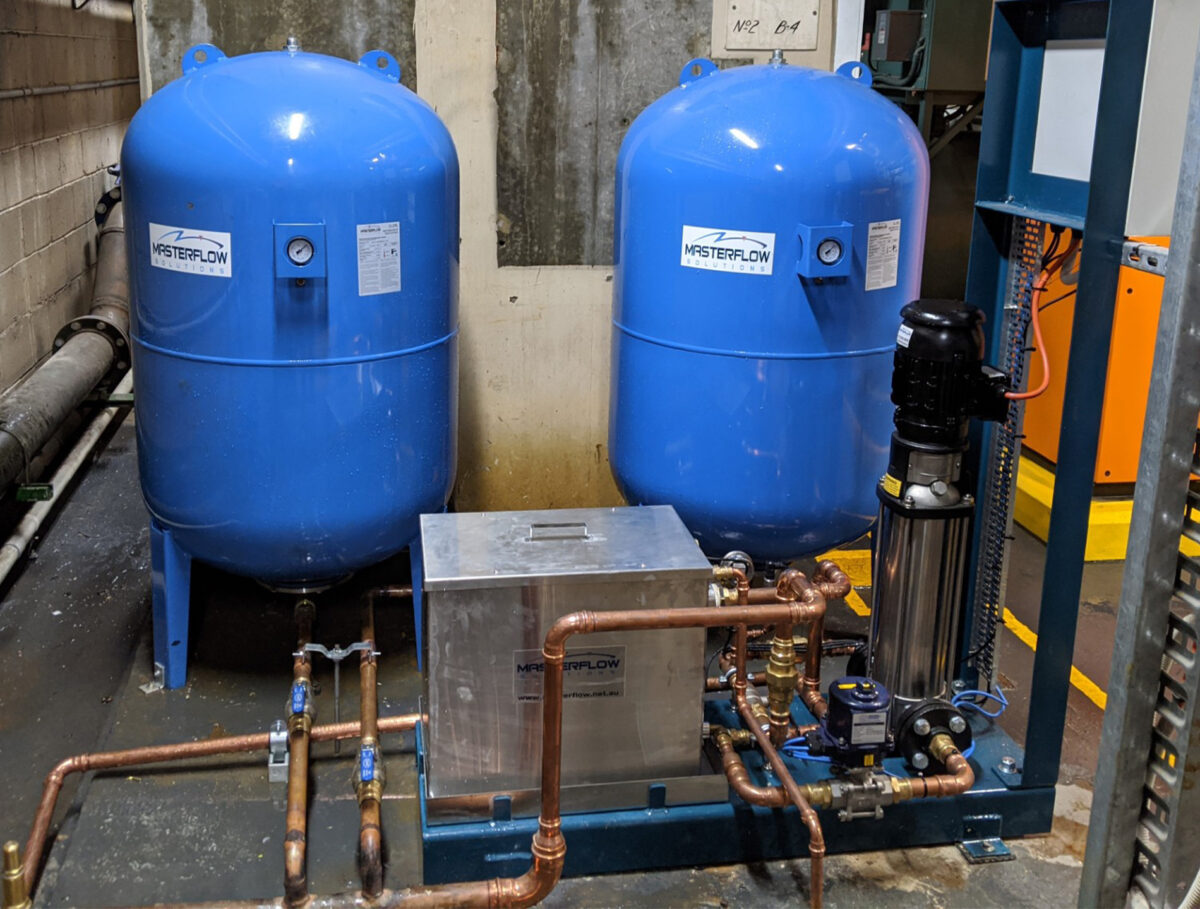Pressure Vessel readings
Challenge
A client reached out to us with questions about the pressure reading of their expansion tanks, as they were not operating within the expected range immediately following installation. Their concern was that the tanks would not operate correctly at the pressure that was displayed.
Our Checks
Assessment Type
To ascertain whether the displayed readings were a cause for concern, or the appropriate pressure for the system to operate, our engineers asked the following questions of our client’s mechanical consultant prior to visiting their site:
- Have you set precharge pressure in the expansion tanks to refill pump filling pressure plus/minus 50kPa?
- What alarm is going off on the control panel? E.g.
- Low level water alarm
- High level water alarm
- Low pressure alarm
- High pressure alarm
- Have you changed the cut in pressure for the refill unit pump? It was set at 950kPa when doing testing in the workshop.
- Has a pressure reducing valve been installed before the break tank float valve?
- What was the pump cut in pressure set to on site?
Diagnosis
Upon inspection, our technicians discovered that the tanks were not pre-charged to the required pressure before being commissioned into the system. This led to the air chamber gauge giving a false reading
Solution
We had our technician visit the client’s site with an air compressor and increase the precharge pressure of both tanks to 950 ± 20kPa.
We then proceeded to bleed the bladders from air through the screw contained within the bladder anchor fitting located on the top of the tanks.

Outcome
Finally, the tanks were reintroduced into the system and the refill unit pump was run to confirm all was good – which it was, control panel read 1060kPa.
If you have concerns about the precharge pressure of your expansion tanks and you’re looking for expert guidance, share your situation with Masterflow and we will identify the right solution for you and your plantroom.

